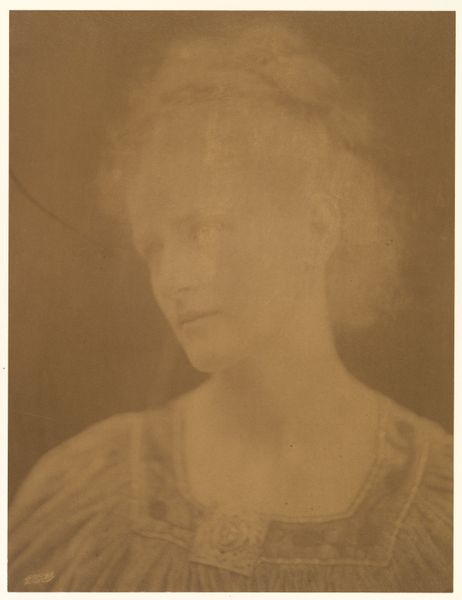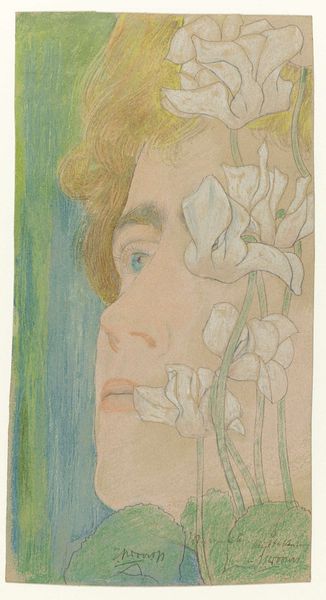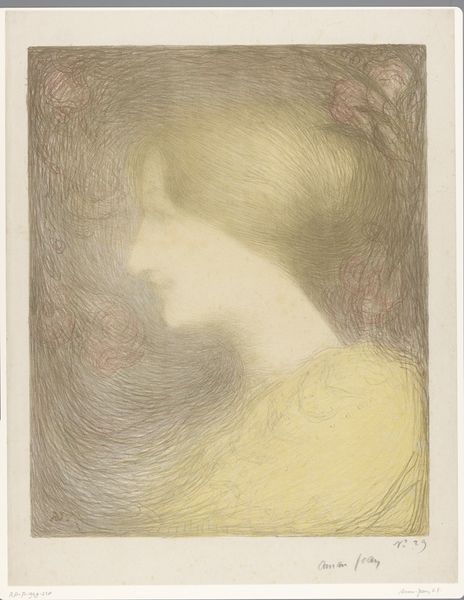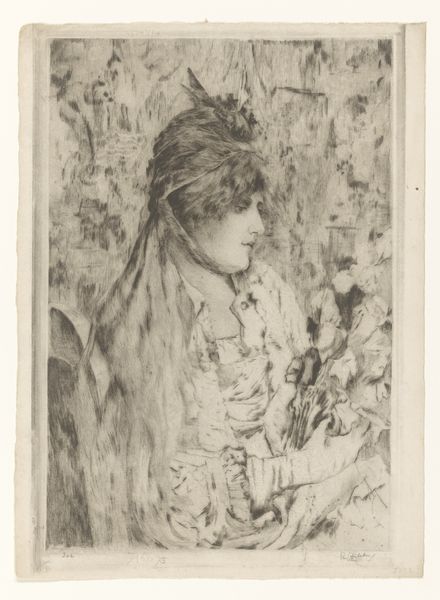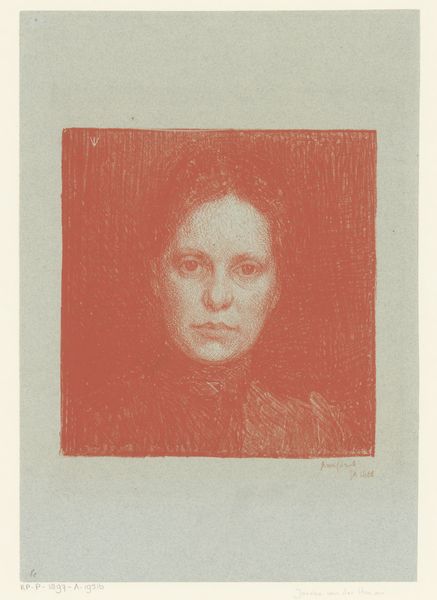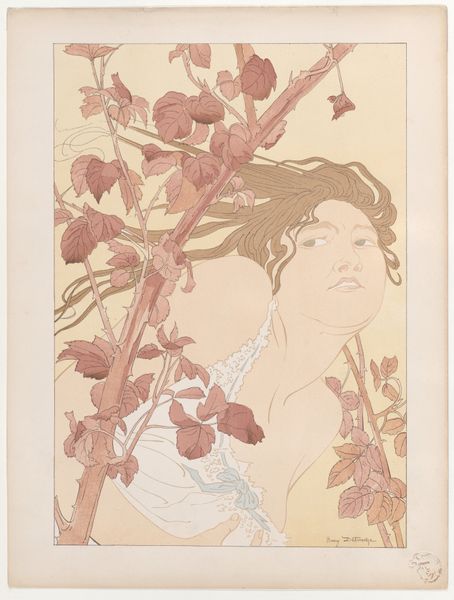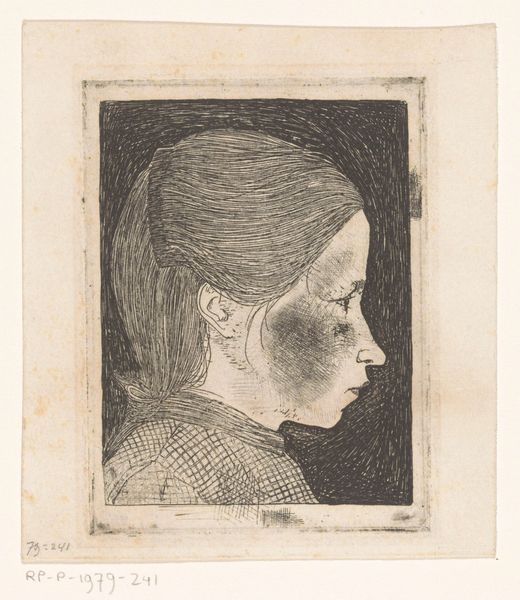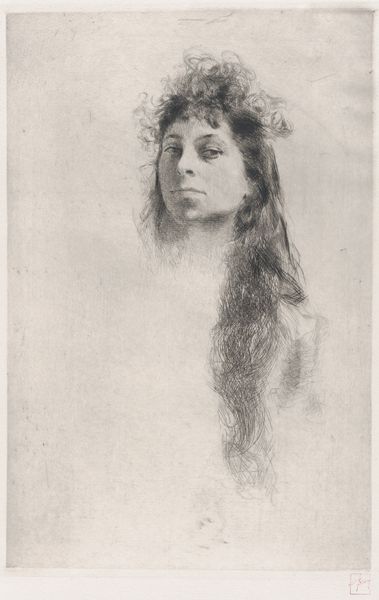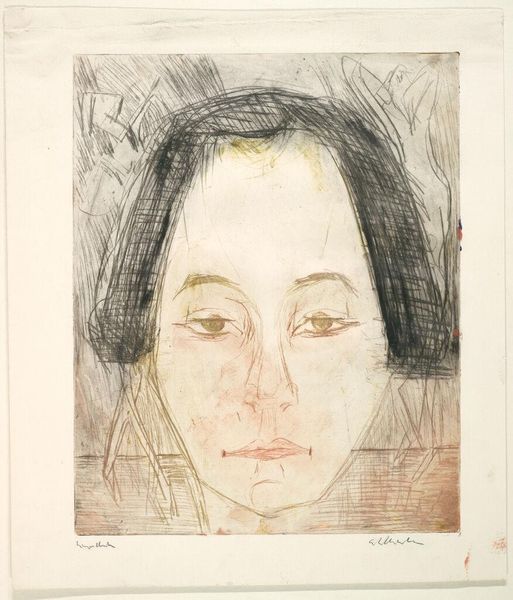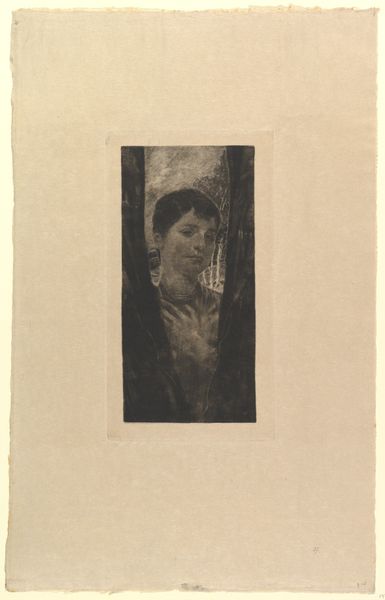
drawing, paper, pencil
#
portrait
#
drawing
#
pencil sketch
#
paper
#
pencil
#
symbolism
#
portrait drawing
Dimensions: height 208 mm, width 135 mm
Copyright: Rijks Museum: Open Domain
Curator: This intriguing work, currently held at the Rijksmuseum, is Jan Toorop's "Portret van een onbekende vrouw," dating sometime between 1868 and 1928. It's a drawing done in pencil on paper. Editor: The immediate impression is ethereal. There’s a delicate, almost dreamlike quality created by the medium and the muted tones. I’m curious about Toorop’s choice of rendering only a pencil sketch rather than something more ‘finished’. Curator: The rawness of the pencil on paper underscores Toorop’s Symbolist leanings. Consider how the unfinished quality reflects a desire to express something beyond the literal. The paper itself becomes a key element in that expression, offering texture. We could examine the societal influence on such artistic choices, too, and how institutional frameworks valued specific aesthetic movements during that period. Editor: It is striking that plant sprigs partially obscure the woman's face. This veiling act feels very intentional. Is there something concealed or repressed here that he suggests? Was the production of a simple portrait insufficient in its own right, forcing this addition? Curator: That covering could be an expression of societal constraints placed on women or an invocation of ideas around mystery that circulated in the symbolism of that period. Moreover, if we consider Toorop’s process, the layering of floral imagery over the face invites consideration of production methods and perhaps even challenging traditional definitions between "high" and "low" art by blurring genre categories. Editor: A social-historical reading of Toorop's art reveals shifts and developments of late nineteenth-century European society, influencing the direction of its artistic endeavors. In light of the Rijksmuseum displaying the work, it reinforces certain aspects of symbolism as part of the cultural canon, and excludes others. How should museums approach exhibiting such a delicate, process-oriented work today? Curator: With care! It's fascinating how a humble material like pencil can convey such complexity. The "unfinished" nature, I find it freeing in a way that more polished works of that period lack. Editor: Indeed. Ultimately, considering the work's place within an institution reframes our very understanding of it. The social life of the piece—its context, exhibition, and consumption—deeply influences its meanings. Curator: Precisely! I never would have thought that the work and materials themselves provide such a deep and socially driven discussion.
Comments
No comments
Be the first to comment and join the conversation on the ultimate creative platform.
